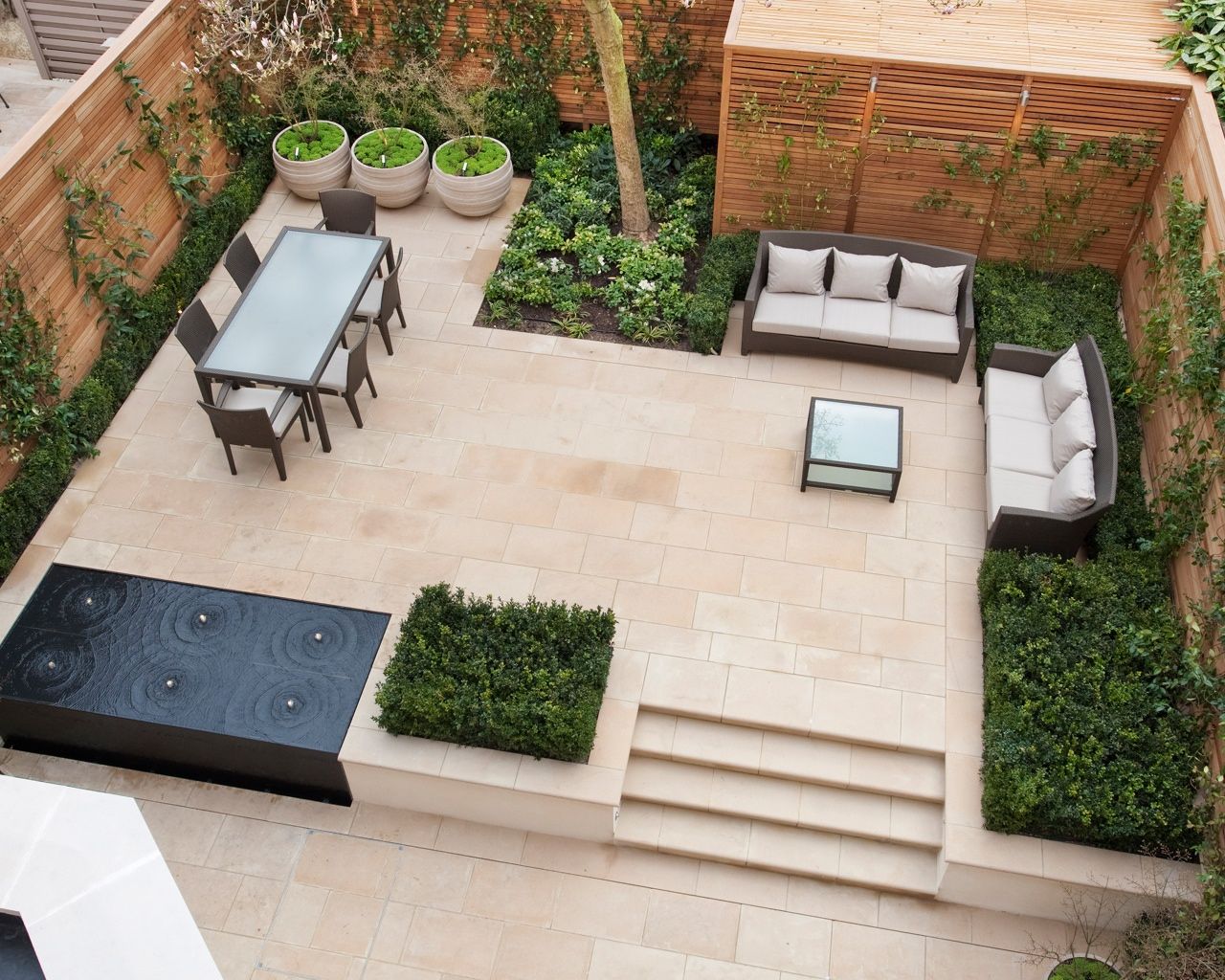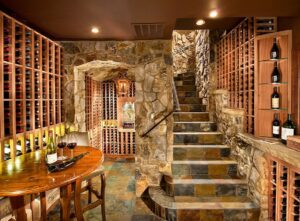
It is determined immediately, regardless of the sphere of embodiment – in the interior, architecture, or landscape design. It’s hard not to recognize hi-tech – a style that evokes fantasies about space and the latest achievements of science.
Style formation It is generally accepted that hi-tech is one of the youngest and most progressive trends. The style of advanced technology originated in the 60s of the last century when humanity made its first flight into space. Such a global event affected all aspects of life and, of course, concerning architecture.
Early hi-tech borrowed so much from modernism that it is considered its chord. High-tech style characterizes monumentality and sculptural form, also complex configurations of simple geometric shapes.
However, the first buildings, built in a new way, caused ridicule and resentment. For example, the Center Pompidou (Paris) remained a topic of controversy for two decades. Many believed that a big glass “box” hung with elevators, escalators, and pipes “disfigured” the capital’s image. In the 90s, the debate subsided, and high-tech suddenly gained popularity. The use of innovative methods made it an expensive and, therefore, elite style. Banks, syndicates, corporations moved to offices built in a new, fashionable trend. Hi-tech has become a status attribute, and it has become part of the image of progressive, business, and successful people.
Characteristics and Advantages of the Style

High-tech on a private plot is the minimalism of form and luxury of the essence, restraint and expression, severity and dynamics, aspiration for tomorrow.
The high-tech garden looks extravagant, and thanks to the polished materials and precise, compact lines, it is impeccable. It will be a successful continuation for a home in any of the modern styles, such as techno, minimalism, or loft. And it will also perfectly fit into the concept of a “smart home.”
Features of the Layout
High-tech will “get along,” in principle, with any relief. But if the terrain is too uneven, crossed by hillocks and depressions, it is better to turn to more landscape styles of landscape design.
The territory of the high-tech garden is not divided into local zones separated by massive fences. The entire garden looks like a single, self-sufficient complex, an open and comfortable studio under the sky.
This style is incompatible with many accessories of ordinary country life. A typical vegetable garden, a lush flower bed, a colorful mixborder – all this is from another “opera.”
Features of High-Tech Style in Landscape Design

Novelty and audacity is the slogan of hi-tech. It concerns not only the selection of materials but also design and construction solutions. This style is not afraid of experimentation and is always one step ahead of mass demand.
The site where high-tech ideas are implemented are inherent in:
- Straight lines, right angles, clear, chopped shapes, cubism.
- The abundance of free space.
- Dimension created by straight paths and steps, flat areas, and the same lawns.
- Utilities, accentuated by paint or brought to the fore to create a more urban picture.
Materials and Finishes

The trend sets by industrial raw materials – anodized and nickel-plated steel, chrome and aluminum, polished concrete, and if a stone, then either artificial or natural, but polished to a shine. With the condition of careful processing, ceramics and wood are used: the first should be glossy, the second should have a pronounced texture and be glazed.
They also use plastic, polycarbonate, vinyl tiles, acrylic stone, any ultra-modern industrial materials.
Paths and Platforms

The alleys are perfectly flat but not necessarily straight: both zigzags and ring paths are allowed. Clarity and evenness that create a precise, rhythmic pattern require walking paths and motorways.
The paving material is also obliged to work for a sense of order and organization. These are smooth concrete tiles, wood-polymer composite, and neat gravel in combination with concrete or porcelain stoneware.
The platforms are mainly covered with concrete, inserting individual, large slabs of metal or textured wood into it. And the sports area is covered with high-quality synthetic grass, rubber, or polyurethane.
Fences
Inside the site, they are permissible when the estate is significant, and some zones need to be removed, veiled. Fences are built from pipes, mesh sections, corrugated boards, and polycarbonate sheets, from a terrace board located horizontally with gaps, from gabions with an original filler.
Inside the site, dense, evenly trimmed bushes and dwarf trees can perform the function of fences. In general, hedges are a rather characteristic detail of a high-tech garden.
Lawns

Lawns are an essential landscape component. There are even several of them on a large plot: a parterre and a garden and park. High-tech lawns differ not only in smooth and precise edges but also in a carefully groomed surface.
Small Architectural Forms
The style makes a genuine request for plant supports, gazebos, bridges, and other buildings—namely, geometric, laconic, original design, and relevance of performance. The last point means that the buildings on the site are made of concrete, metal, glass, plastic, polished stone, and glazed wood.
High-tech gazebos are often shaped like a cube, pyramid, hemisphere, or hollow ball. Pergolas made of aluminum or treated wood can be deliberately simple or have an unusual, hammered look.
Water

If there is a lot of space, arrange several ponds, connecting them into cascades. Such reservoirs form complex configurations, channels, basins with “islands.” They are sent to the mirror-smooth concrete banks. However, high-tech ponds can also be modular, raised with sides made of metal or glass.
A high-tech fountain is often a metal bowl, a transparent ball, a stone stele, or a cube, from the top of which water flows.
The ponds on the site are often supplied with lighting and sometimes with diffusers that disperse artificial haze.
Lighting

Backlighting is a crucial styling factor. In the garden of the latest technology, all objects are illuminated, including the water in the pool. Colored LED strips emitting an even, not too harsh glow, border paths, ponds, hedges, and even garden furniture.
High-tech country lanterns are both simple balls and posts and unusual devices on long “legs,” hanging chains or brackets attached to the walls.
Lamps decorated with solar batteries are also consonant with the style: wireless devices gently highlight flower beds and paths.
Plot Palette

Calm, impassive tones rule the ball: gray, white, black, silver, dull purple, burgundy, brown. Bright colors are present in the form of inclusions, accents, bringing surprise and cheerfulness to the atmosphere.
Garden Furniture

It is made from stainless steel, glass, smooth wooden slats from wicker, artificial rattan. Outdoor chairs can be plastic, not bulky and mobile. Only two qualities decorate high-tech furniture: the originality of the design and the combination of matte materials with glossy ones.
Decorative Details

The decor can be futuristic, avant-garde figures made of metal, glass, natural or artificial stone.
We must say that the stone in high-tech takes a particular place, acting as a building material and a decorative accessory. Stones are often placed solely for beauty. Regular, polished balls, columns, and pedestals play the same role as rose bushes and marble cupids in a traditional garden.
The second most popular decorative element for a high-tech site is mirror plastic. Mirror inserts mounted into walls, garden furniture, fences, and sculptural compositions; they shimmer in flower beds and alpine hills. Decorate with lighting and mirrors uses the site’s zone to give it a more significant visual perspective.
Trees, Bushes, and Flowers

In a high-tech garden, where there are more areas than greenery, plants are subordinate. The flower bed mounts into a module made of stone, concrete, or plastic. Flower gardens prefer containers with a set of monochrome succulents or hosts.
A well-defined crown, carved leaves are the main criteria when choosing crops. Spruce, maple, decorative thuja and apple trees, hornbeams, cypresses, agaves or ferns in containers, sheared boxwood, and barberry will adequately complement a high-tech plot.
To highlight a particular area so that the garden does not look too monotonous, at some points, you can plant more “frivolous” trees, for example, a weeping willow or viburnum.
Recommended flowers include castor oil plant, rhododendron, catnip, dahlias, daylilies, dwarf sunflowers, bergenia, and hydrangea with globular inflorescences. The choice is vast, but you will have to limit yourself to 3-4 types to create a balanced, calm picture for the eyes.
Typical techniques, thanks to which a high-tech garden acquires even more excellent manufacturability and, at the same time, flavor:
- Plants in containers. Even trees are planted in concrete, plastic containers of a rectangular, oval, or round shape, and topiary is formed in them.
- Vertical gardening. Not only the widespread ivy, Actinidia, and maiden grapes are allowed on the supports. But also garden crops: tomatoes, okra, pumpkin, red beans. Vegetables in flower beds are also not uncommon. Corn, artichoke, savoy cabbage are cultivated instead of flowers.
- Dendroplasty is a new word in landscape art. When small architectural forms, a gazebo, for example, are “built” from living materials – trees, bushes, and lianas. In addition, in the garden, where hi-tech is embodied, “monuments” are created from dense bushes touching crowns.
- Optical illusions – one might say, a hi-tech bonus. They are achieved with the help of metal, glass, alternating white and black surfaces, mirrors and lights. In addition to the visual play, which adds eccentricity to the site, creates a feeling of larger space, saturates with light.
As you can see, high-tech landscape design is not dull, heartless pragmatism, but courage, impulse, and imagination expressed utilizing the 21st century.






